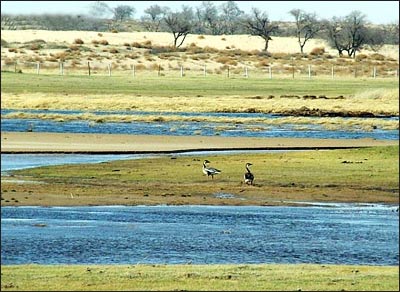China's first nature reserve was the Dinghu Mountain Nature
Reserve in Zhaoqing, Guangdong Province established in 1956. By the
end of 2005, some 2,349 nature reserves of various kinds have been
set up throughout the country, covering a total area of 149.95
million ha, and accounting for 15 percent of the total land
territory. Protected through these nature reserves are 88 percent
of China's land eco-system types, 87 percent of its wildlife
populations, 65 percent of its higher plant communities, nearly 20
percent of its natural forests, 50 percent of its marshland and
wetland, the main habitats of more than 300 precious and endangered
wild animal species, and major distribution areas for over 130
precious tree varieties.
 |
The Sanjiangyuan Nature Reserve established in August 2000 has
the greatest concentration of biodiversity of all China's nature
reserves. Covering an area of 316,000 sq km and with an average
elevation of 4,000 meters, it is also the largest and highest. It
is located in the central area of the Qinghai-Tibet Plateau, at the
source of the Yangtze, Yellow and Lancang rivers. State-level
investment of 220 million yuan has been committed to the
Sanjiangyuan protection project, which started in 2003. Guangdong
Province has 256 nature reserves, the most in China, covering a
combined area of 3.3 million ha. Wolong and Jiuzhaigou in Sichuan,
Changbaishan in Jilin, Dinghushan in Guangdong and Baishuijiang in
Gansu, are among the 27 nature reserves that have been designated
by UNESCO as "World Biosphere Reserves."